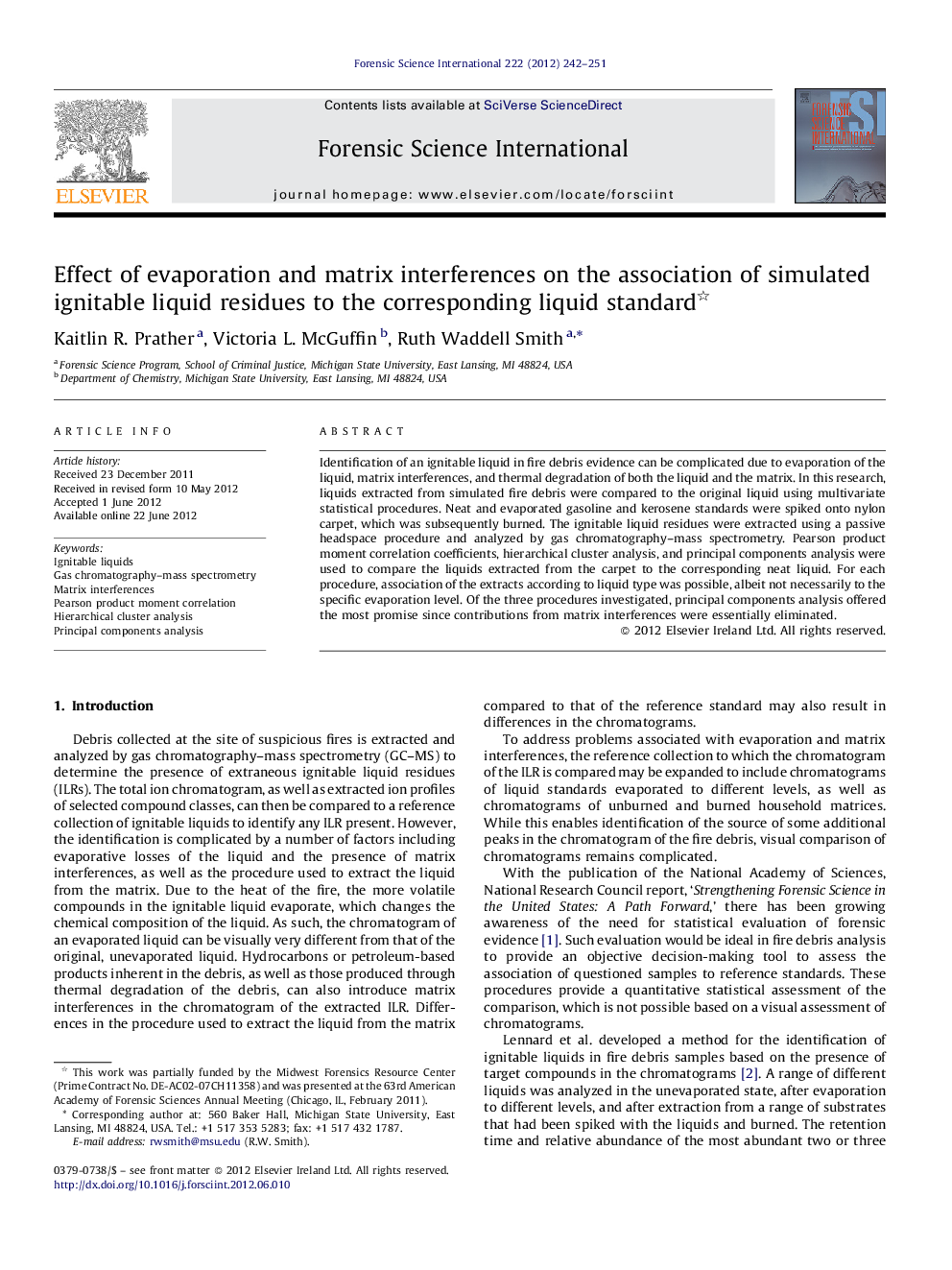| Article ID | Journal | Published Year | Pages | File Type |
|---|---|---|---|---|
| 96498 | Forensic Science International | 2012 | 10 Pages |
Identification of an ignitable liquid in fire debris evidence can be complicated due to evaporation of the liquid, matrix interferences, and thermal degradation of both the liquid and the matrix. In this research, liquids extracted from simulated fire debris were compared to the original liquid using multivariate statistical procedures. Neat and evaporated gasoline and kerosene standards were spiked onto nylon carpet, which was subsequently burned. The ignitable liquid residues were extracted using a passive headspace procedure and analyzed by gas chromatography–mass spectrometry. Pearson product moment correlation coefficients, hierarchical cluster analysis, and principal components analysis were used to compare the liquids extracted from the carpet to the corresponding neat liquid. For each procedure, association of the extracts according to liquid type was possible, albeit not necessarily to the specific evaporation level. Of the three procedures investigated, principal components analysis offered the most promise since contributions from matrix interferences were essentially eliminated.
